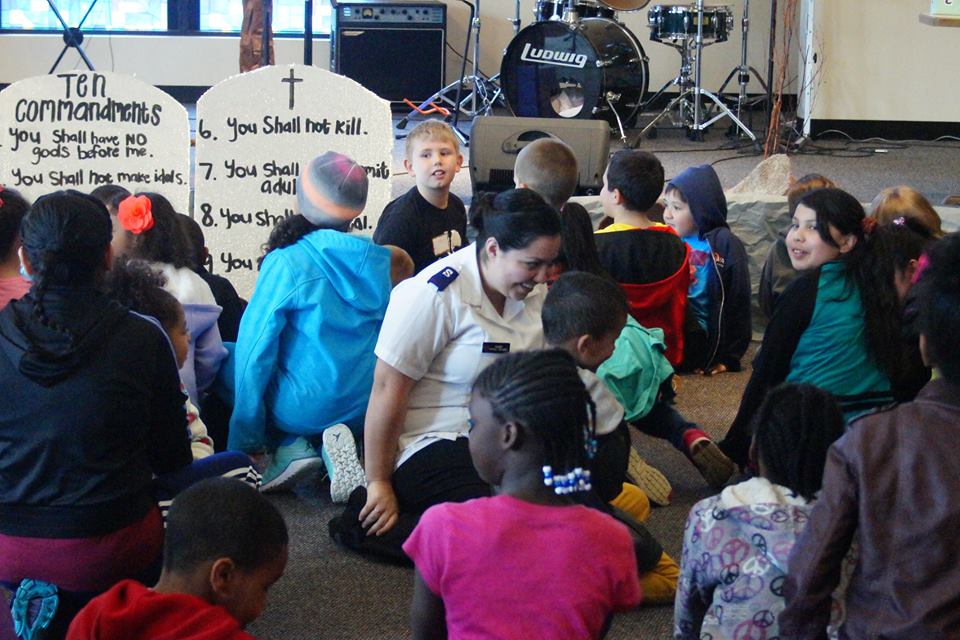Got any glue?
by Robert Docter, Editor-In-Chief –
Building community within a group of people is the responsibility of the leader.
That’s you, Captain – or Major.
Community arrives along with increased cohesiveness of the group. Irvin Yalom defines this as “the attractiveness of the group by its members.” In other words, how much do people want to have membership or engage in regular attendance in the group. Cohesiveness is a kind of “we-ness” where people feel a common bond in working toward common goals. It’s the glue that makes groups work. Cohesiveness avoids exclusivity. It is, I hope, open and accepting. If it isn’t it’s a private club – not a community.
All groups are made up of a large number of very different individuals. They bring with them varying thoughts and feeling about a number of different factors. Some of these factors are positive and stimulate attraction of the group by its members. One such factor, trust, is essential. Trust raises the comfort level. This allows the members to feel safe even in the face of conflict and disagreement. Opportunities for interaction among the members along with a spirit of cooperation adds to the cohesion. A cohesive community finds its own identity. It gives itself a label. It has a measure of pride without smugness. It feels very positive about itself. It is the responsibility of the leader to facilitate the presence of these factors.
Other factors inhibit attraction. Judgmentalism clearly leads to non-cohesiveness. This is especially true when it is demonstrated by the leader. Being judgmental causes people to feel unsafe – an unpleasant feeling that seems to makes the group unattractive. Therefore, people avoid that community. It also reduces trust.
Frustration delivers an unpleasant feeling and a negative attitude. It is not harmful if addressed. It often occurs in relation to the interpersonal style of the members toward each other. Frustration is the product of unrealized expectation. When people expect something to happen in a certain manner and it doesn’t they become frustrated.
Making unreasonable demands on the members leads to a down turn in cohesiveness and a decline in the effectiveness of the community. Over participation and dominance by a small group of people becomes a negative factor. This type of sub-grouping can quickly turn into a clique.
Other negative factors include irrational rules, competitiveness, and scapegoating. They becomes a quick threat to everyone.
Adam Walker in his website asking Y.com lists “10 ways to avoid building community within a church:
1. Keep conversations short.
You’re a busy person and deserve the opportunity to establish your own agenda
2. Always sit in your assigned seat.
In this way you will always have the opportunity to sit around the same people and, moreover, you show consistency.
3. Avoid new people
It is an unfair burden to ask you to speak or relate to someone you don’t know — when especially you have so many friends you want to speak with.
4. Try to come in just a little late.
In that way you avoid extensive conversation with people not worth speaking to.
5. Leave immediately after the service – or better yet, try to “slip” out just a little early.
This way, you are the first out of the parking lot, beat the crowd and avoid the incessant pests who want to talk and talk and talk.
6. If there’s a church dinner, avoid it. If impossible, always sit with the same group.
Whatever you do, don’t ask someone to join you at a table. You will embarrass them and make it difficult for them to say “no.”
7. Be physically present, but mentally absent.
When talking to someone, pretend to be listening by nodding your head every once in awhile – what ever they say isn’t really important anyway.
8. Stay very, very busy all the time
All this “hello – nice to see you” business is a waste of time.
9. If someone greets you and inquires how everything is going with you, always have a default response like: “just great” — and then rush off because, remember, you’re very busy.
This is the only way to reveal that your life is not truly perfect.
10. Don’t bother to show up at all
This is the ultimate method of avoiding any community building.
Adam says: “Sadly, I see much of myself in these 10 things, and I’m the minister.”
I must admit, I join him and am probably guilty of at least eight out of ten.
It seems clear to me that community building demands relationship, and relationships take time and energy. As you explore the group of people with whom you associate, ask yourself about the level of cohesiveness – the glue that holds them and you together. How much attraction for the group is evident? Have they established an identity as a group? What’s the quality of your relationship with the members?
Nothing is more important to a leader than a strong commitment to positive interpersonal relationship. They build community.
Go for it.











